The Dalstrong Omega chef knife is designed to be the ultimate multipurpose knife in your kitchen arsenal. We show you if it lives up to the hype.
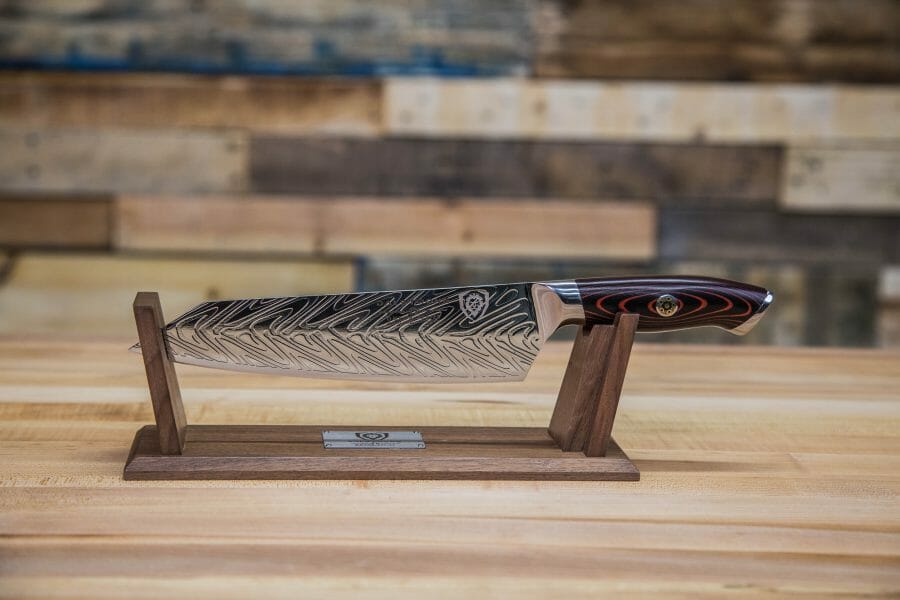
Note: Some of the links in this article may be affiliate links. This doesn’t cost you any more than normal. Read our disclaimer for more info.
You might be used to hearing names like Wusthof, Shun, Henckels, or Victorinox if you’ve shopped for knives at a retail store here in the United States, but if you’ve shopped on Amazon, you’ve probably seen the Dalstrong brand show up as well in your search. In fact, today when I type in the broad search term “Chef Knife,” in Amazon, Dalstrong is the first knife they show me as a result.
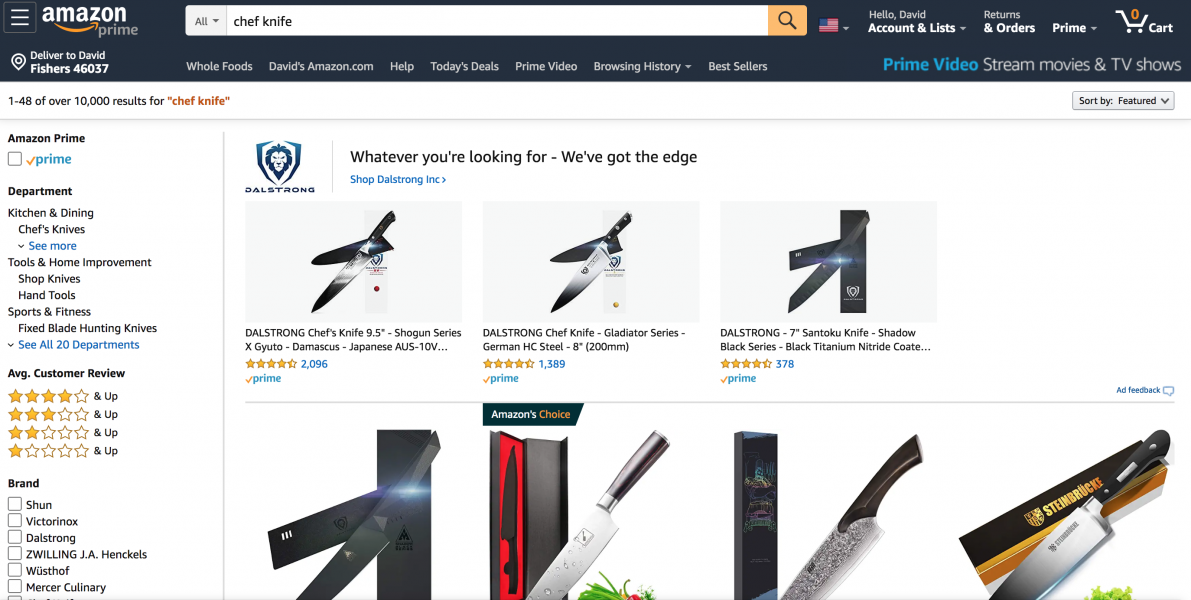
Let’s start with a disclaimer. I’m not a professional chef who spends 8 hours a day in the kitchen chopping food for hungry customers. I’m a home kitchen and outdoor cooking nerd who is always on the lookout for the best gear, and I love my knives. I’ve asked for knives for Christmas for the last 20 years from family members, and I’m a firm believer that you can’t have too many knives in the kitchen.
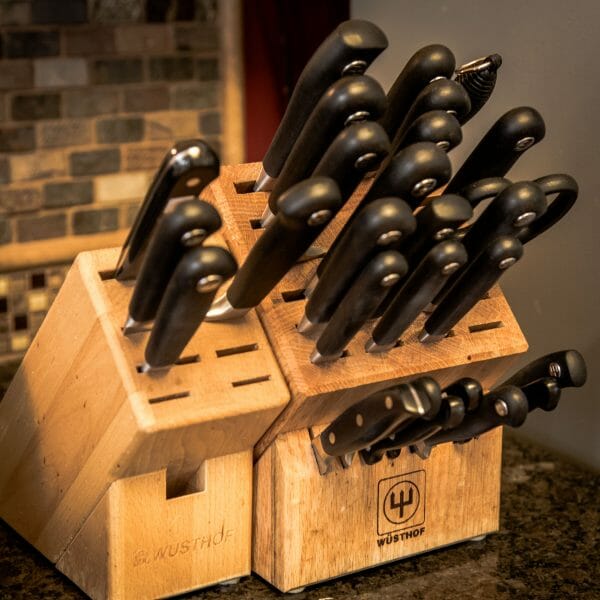
We’ve been using the Grand Prix series of knives from Wusthof for over 10 years, and they’re amazing knives. They’re our workhorses, and we use them for everything. These are German style knives, and the German style is pretty much what we’ve stuck to for many years due to their durability and curved edge for a rocking style chop.
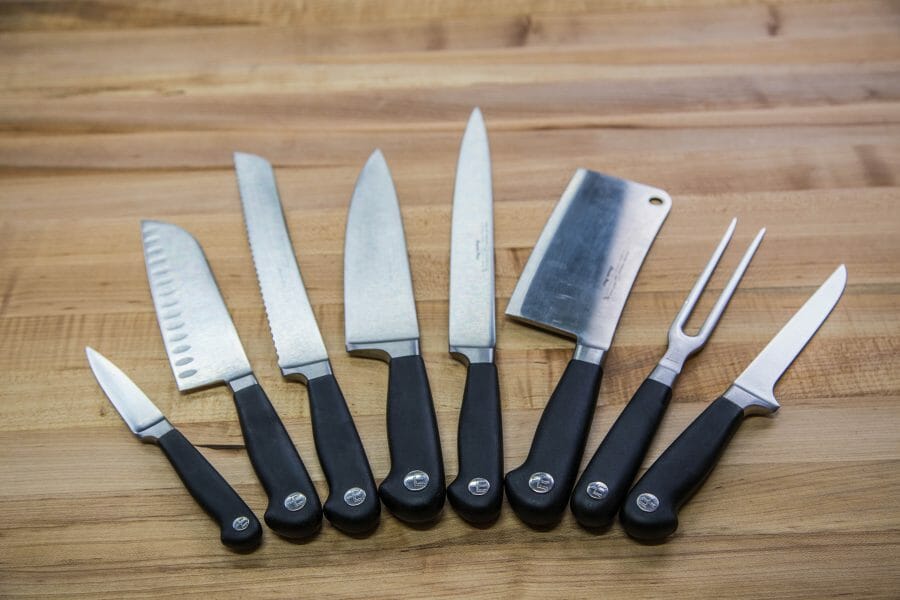
Dalstrong Chef Knives
Brands like Shun, Enso, Masamoto and others have some of the sharpest and most beautiful knives on the planet, but let’s be honest, they’re kind of pricey. This is where Dalstrong comes in and lobs a grenade into the kitchen knife market.
Dalstrong isn’t a Japanese knife manufacturer like the brands we just mentioned. Dalstrong is a Canadian company manufacturing knives in China in a Japanese style. (Did you catch all of that?)
Today we’re looking at the crown jewel of the Dalstrong Omega series, the 8.5in. Kiritsuke knife. To put it into perspective in the Dalstrong line of knives, here’s a comparison of the main “chef” knife from each series.
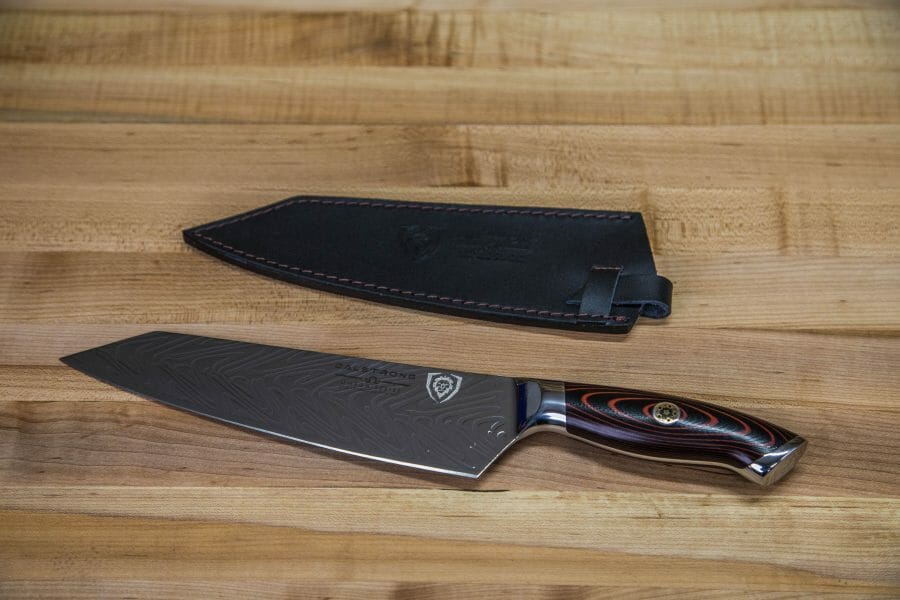
At the time of this post, there are 6 series of Dalstrong knives.
We start off with the Crusader Series, and the 8” chefs knife is priced at $59.
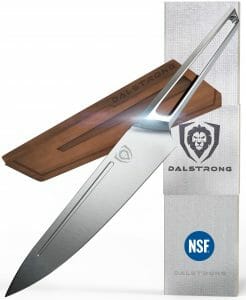
Next is the Shadow Black Series, and an 8” chefs knife is available for $69. The Shadow Black series is black titanium nitride coated, so they’re a stunner in their own right. We’ll provide a link to each series below so you can head online and check them out.
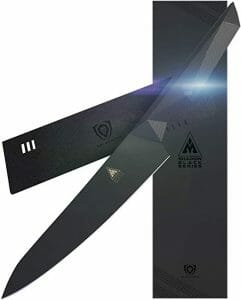
The Gladiator Series is up next with an 8” chefs knife for $69, same price as the Shadow Black series above.
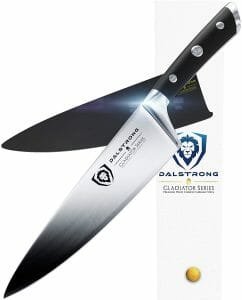
The new Phantom Series offers up their only chefs knife at 9.5 inches at a price point of $89.
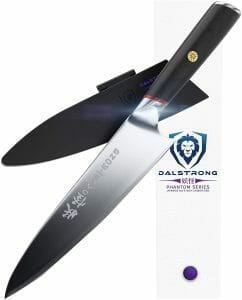
Then we take a significant step up to the Shogun series, where an 8” chefs knife is priced at $129.
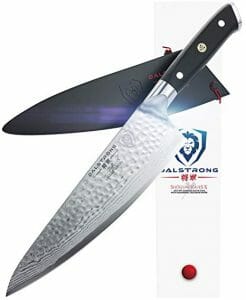
And finally we round out the product line with the Omega series, where the primary “multipurpose” knife of the series is the 8.5” kiritsuke that we have here. This knife is available for $159 at the time of this video, and as always, you can check current pricing by clicking here.
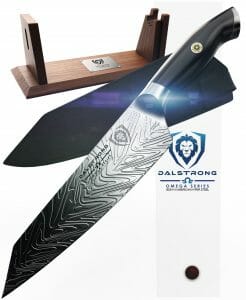
Omega 8.5” Kiritsuke Features
The handle on the Dalstrong is made of G10 Garolite, which is a type of military grade composite material. Unlike other knives that may have wood handles, you’re not going to end up with splitting, cracking or fading with a handle made of garolite.
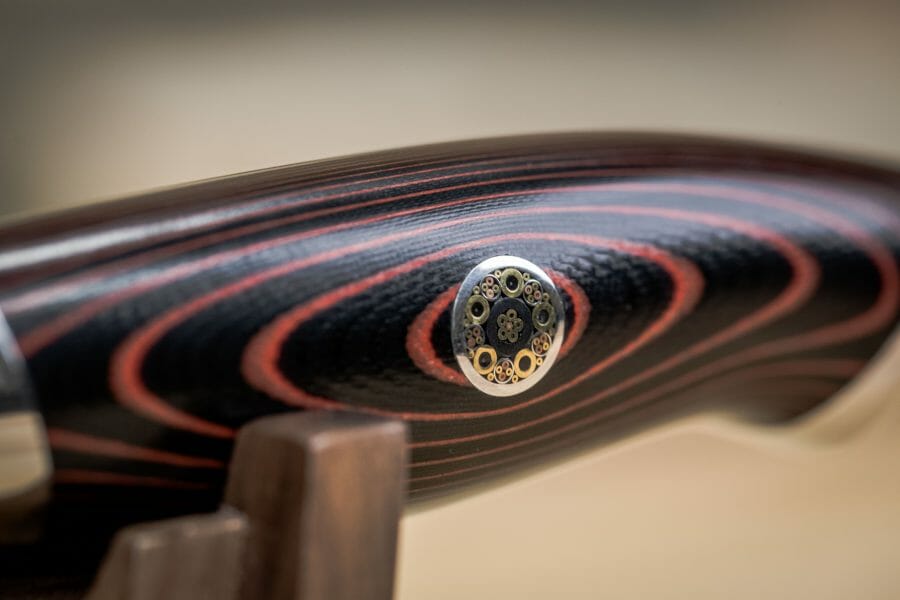
There’s a lovely mosaic rivet holding things together on the Omega series, and it’s yet another touch of branding that sets Dalstrong apart from many other manufacturers.
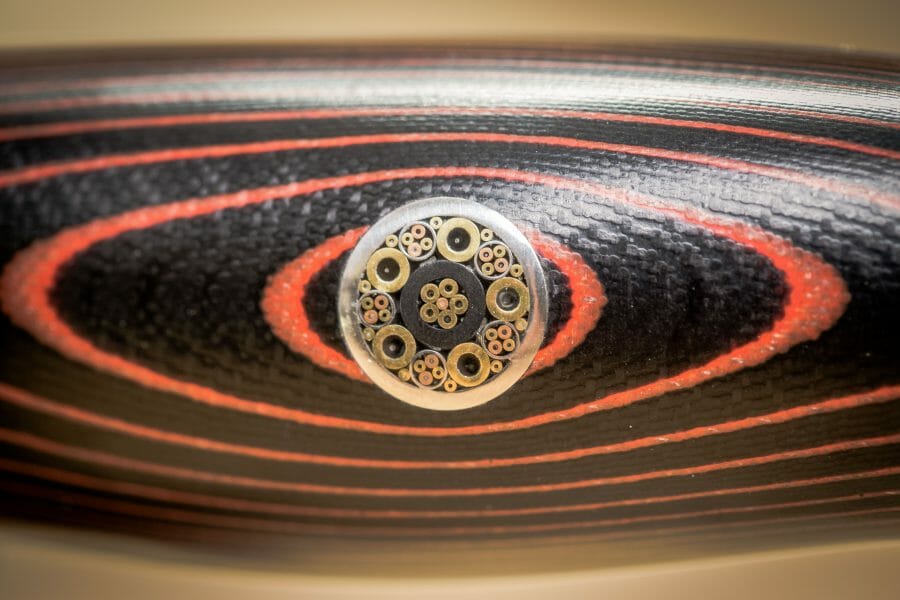
You’ll also find the Dalstrong Logo on the tail cap of the knife, as well as on the blade itself.
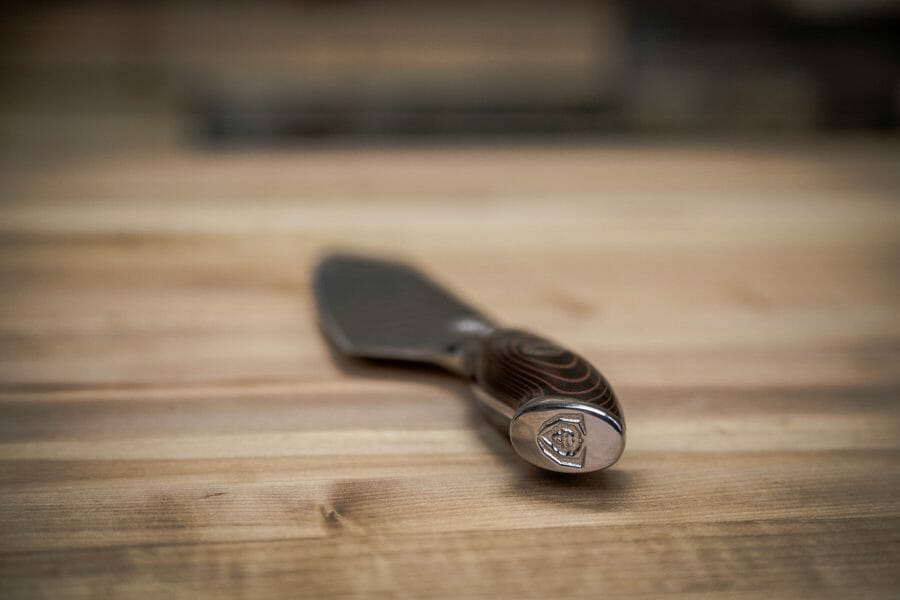
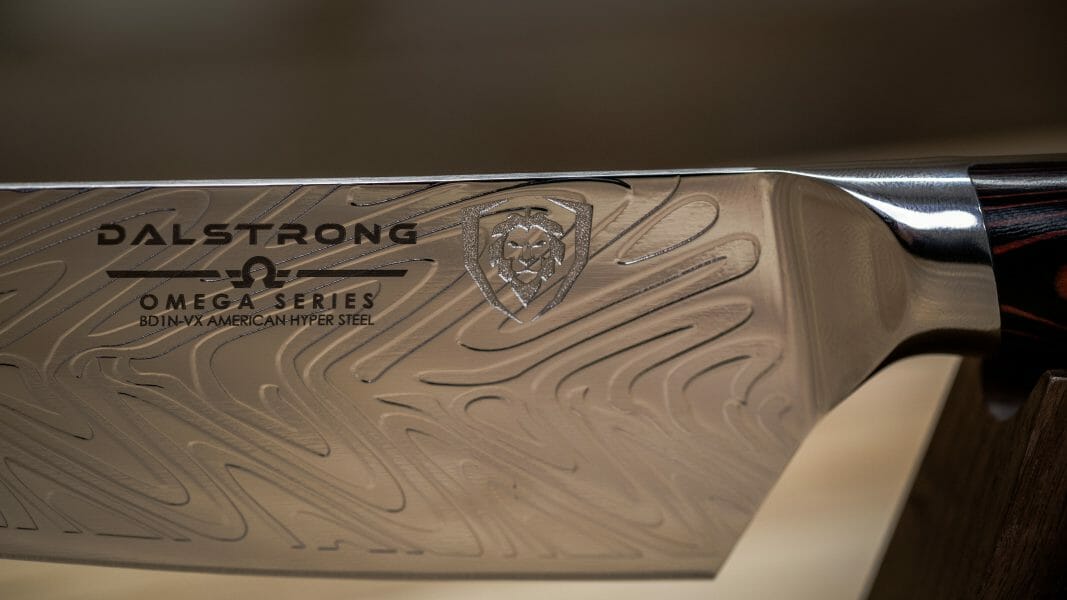
The Omega series has what is called a liquid metal finish, which isn’t damascus, but is stamped into the blade. The finish looks amazing, and at a distance looks like the most defined damascus effect you’ve ever seen on a knife. As you get closer though, you can see that it’s not damascus as you would traditionally see it, but it’s still beautiful.
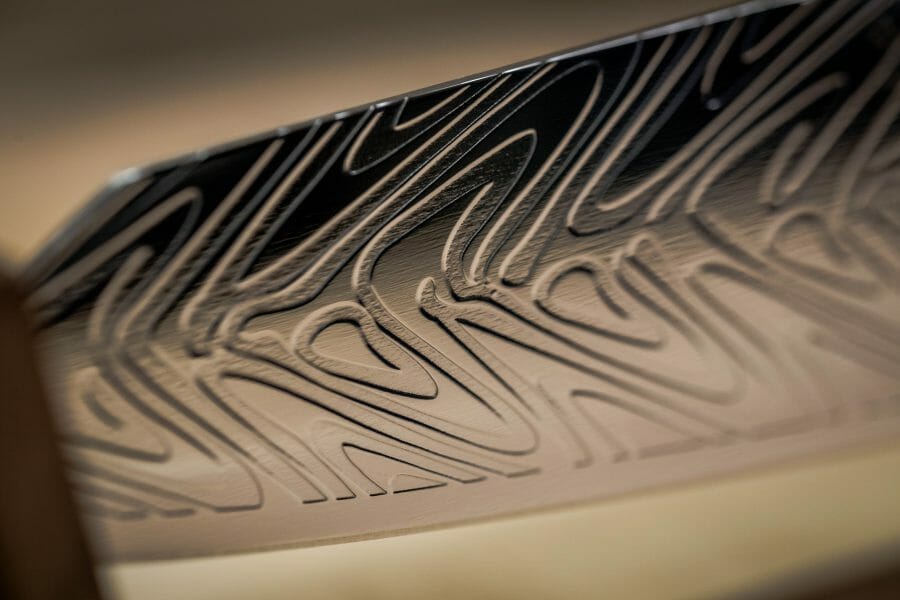
The question is though, is the liquid metal finish a gimmick, or does it live up to the purpose?
Dalstrong says that the liquid metal is supposed to release the pressure between the food and the knife allowing the food to just fall off and not stick to the blade, so we put that to the test. Here’s what the sharpness was like right out of the box.
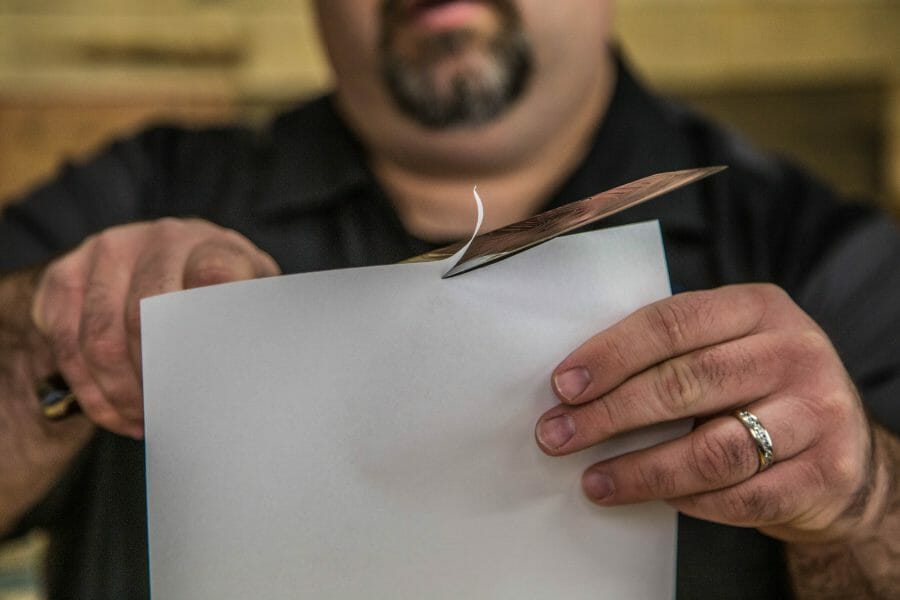
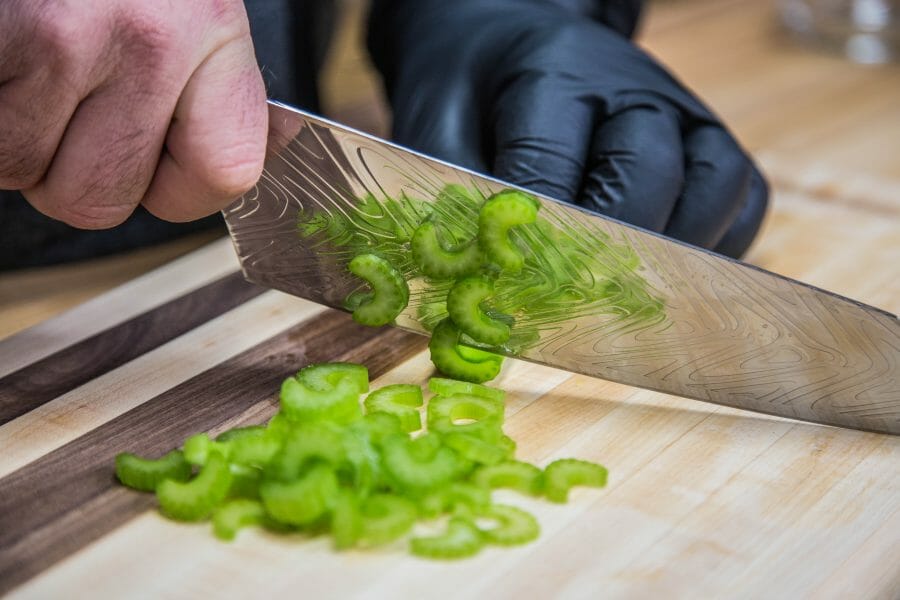
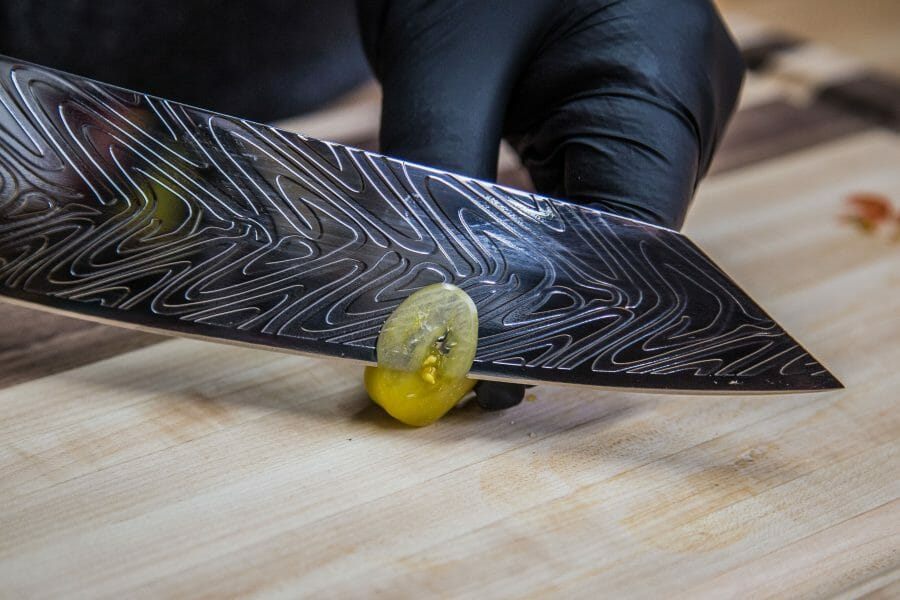
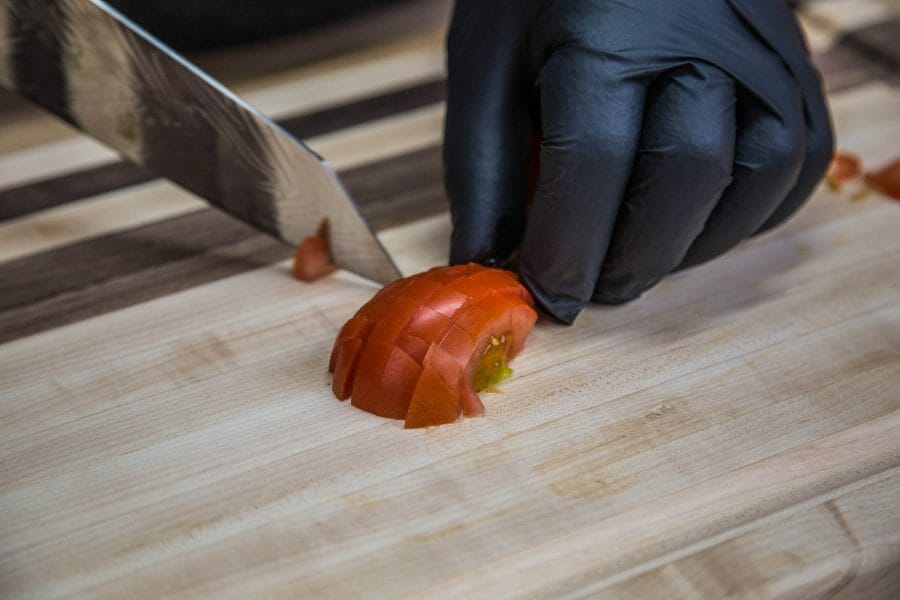
Pretty much any knife fresh out of the package is going to be sharp, but I don’t think I have ever had the ability to slice a tomato as thin as I did with the Dalstrong. That was some pretty next level sharpness.
The liquid metal finish did appear to help release food from the blade to a certain extent, however as you can see above, the celery did collect for a few seconds before letting go.
What is a Kiritsuke Knife?
Depending on who you ask, kiritsuke (Kir-it-sk-A) means either “Sword Tip” or “Slit Open.” – It’s a cross between two Japanese knives, the Usuba (Eww-soo-bah) and the Yanagiba (Yah-na-gih-bah). The (Eww-soo-bah) usuba knife is traditionally used as a vegetable knife and the Yanagiba (Yah-na-gih-bah) knife is primarily used for cutting raw fish for sashimi (sliced raw protein usually found in sushi)
Kiritsuke knives are often associated with Japanese master chefs, and as they reach that status, they’re often times presented with a Kiritsuke knife. Now, there’s some people who disagree with this idea, but Shun knives (a trusted brand in the Japanese knife space) actually includes this story in their Kiritsuke knife box upon purchase (and it’s easy to find right on their website.)
Do you have to be a Master Chef to own or use a kiritsuke knife? If that were true, there would really be a micro market for these type of knives, and that isn’t the case.
The kiritsuke is also known for being one of the only multipurpose knives in a Japanese set. There are of course Japanese manufacturers who make German style chef knives, but this knife is designed for both slicing and chopping.
Is this a Damascus Knife?
The first time I saw a Damascus knife, I knew I had to have one. That gorgeous wave that is found throughout the blade just calls to me, because it adds a real “wow” factor to an everyday kitchen tool.
I’m drawn to both form and function, and Damascus style knives took form to whole other level and retained the function we use everyday in the kitchen.
Amazon lists this as a 67 layer Damascus knife. While the finish on the knife has a Damascus look, it is what Dalstrong calls “liquid metal” and not a true Damascus finish as far as we can tell.
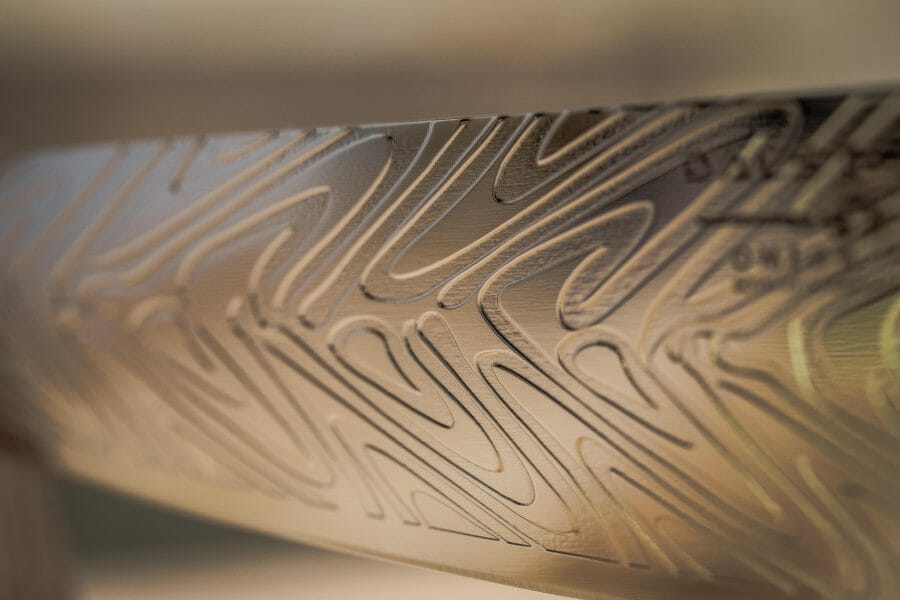
Comparing German and Japanese Knives
So, which type of knife do you use in the kitchen? Are you a German style knife or a Japanese style knife user?
Cutting Style
With German style knives, you’re probably familiar with the rocking style of cutting where you cut by rocking the blade back and forth on its curved edge.
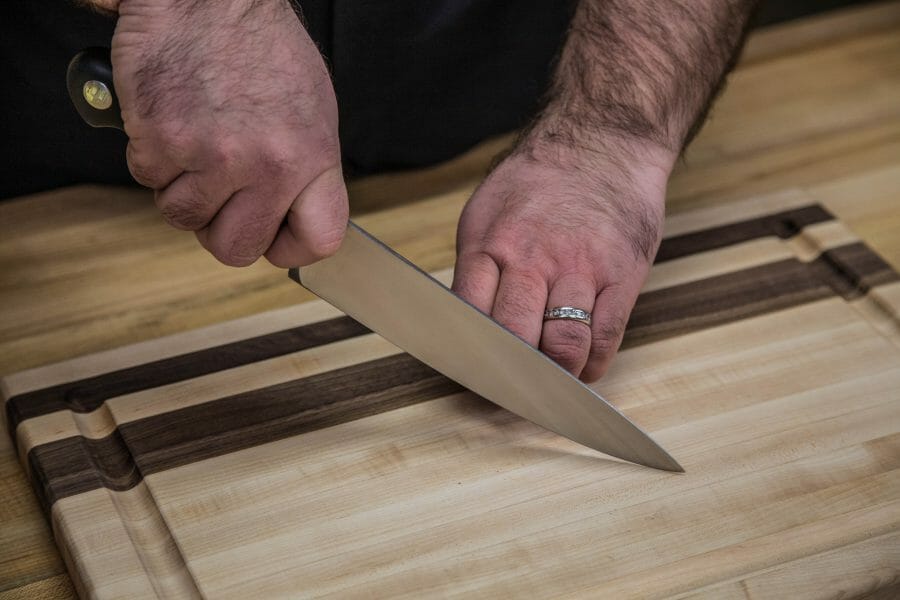
Most Japanese knives like the usuba, santuku and the nikiri have a straight edge for push cutting rather than a rocking style of cut. So, we’re talking about a difference in how you use many Japanese knives when compared to their German counterparts.
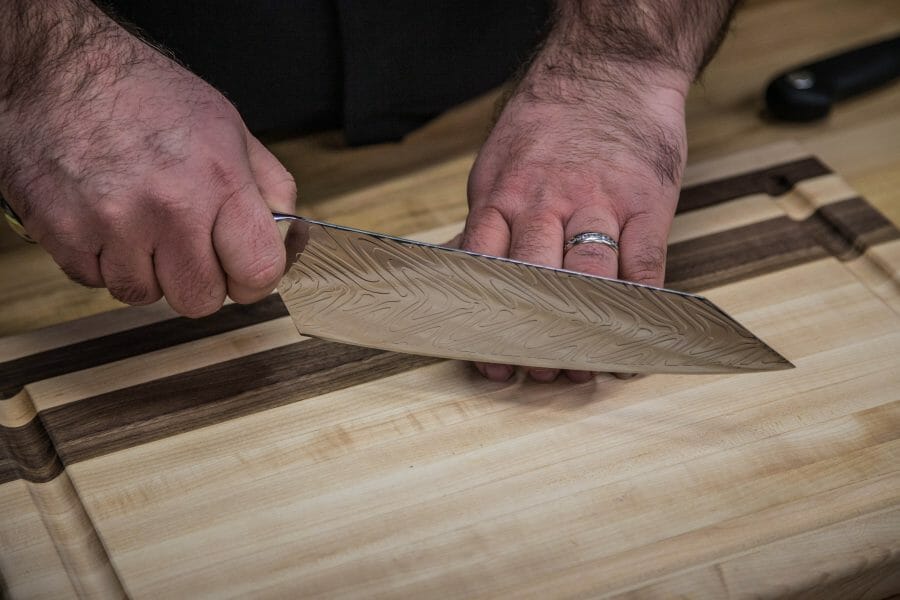
Hardness
The Omega kiritsuke achieves a 62-63 on the rockwell hardness scale.
The Wusthof in comparison gets about a 58 on the Rockwell scale, so it’s harder than a Wusthof, which means it can hold its edge longer, but can also be prone to chipping.
The kiritsuke is made of American made BDN1 steel, and just know that this is a decently hard knife.
A softer knife like the Wusthof might see the tip bend if dropped on the tip from a counter top, but the harder the knife, the more prone to chipping. Something to consider when you start looking at serious knives for your kitchen.
(A Shun hardness for the Premier series is about 62 as well, and hardness of 1 equals about 10%, so a massive difference between 58 and 63.)
Is this Knife For You?
How do you know if the Dalstrong Omega chef knife is for you? If around $150 is what you’re looking to invest in a good Chef knife, the Omega kiritsuke, Wusthof Grand Prix II 8” chefs knife, and the Shun Premier 8” are all between $140 – $185.
All three are incredible knives that any of us would be lucky to have in our own knife blocks.
You certainly can’t argue with the beauty of this knife. I mean, it’s gorgeous!
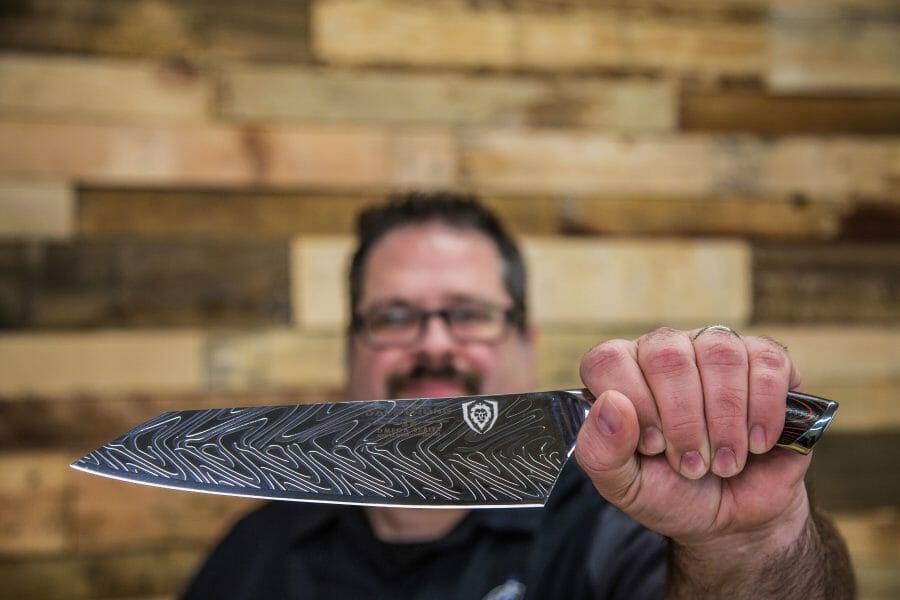
But we don’t spend that much money on a knife for its beauty. We buy it for it’s supreme function. And once again, this passes all tests of function with flying colors. It’s an incredibly sharp knife that can cut through food with ease.
So I guess that leaves us with just one more deciding question. What is your preferred style of cutting? Do you prefer the rocking cut style used with German knives like the Wusthof? Or the push cut style used with Japanese knives like the Dalstrong?
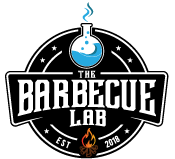
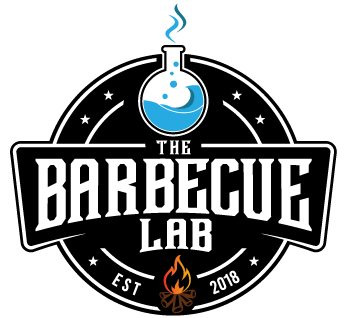
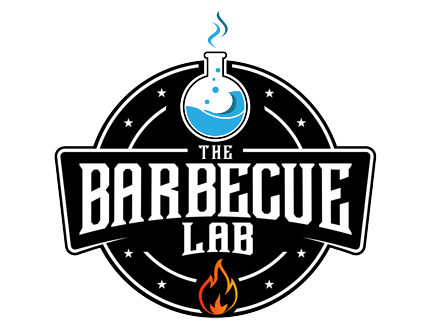
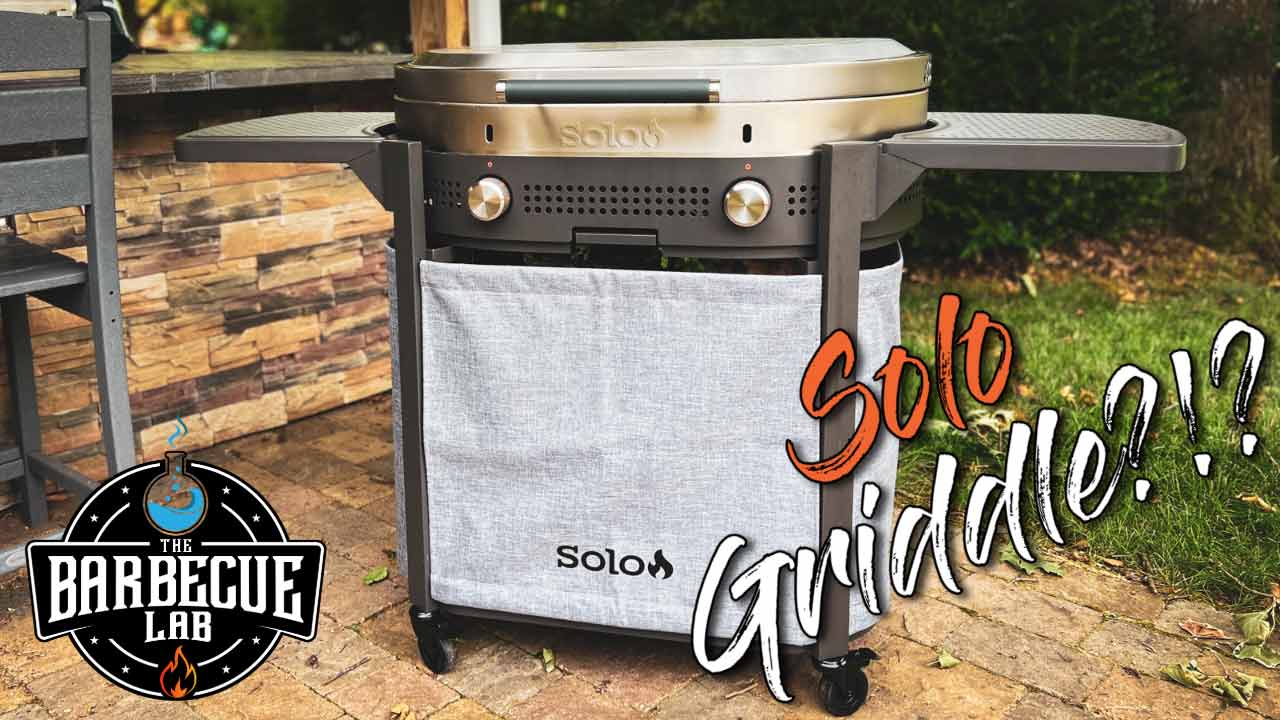

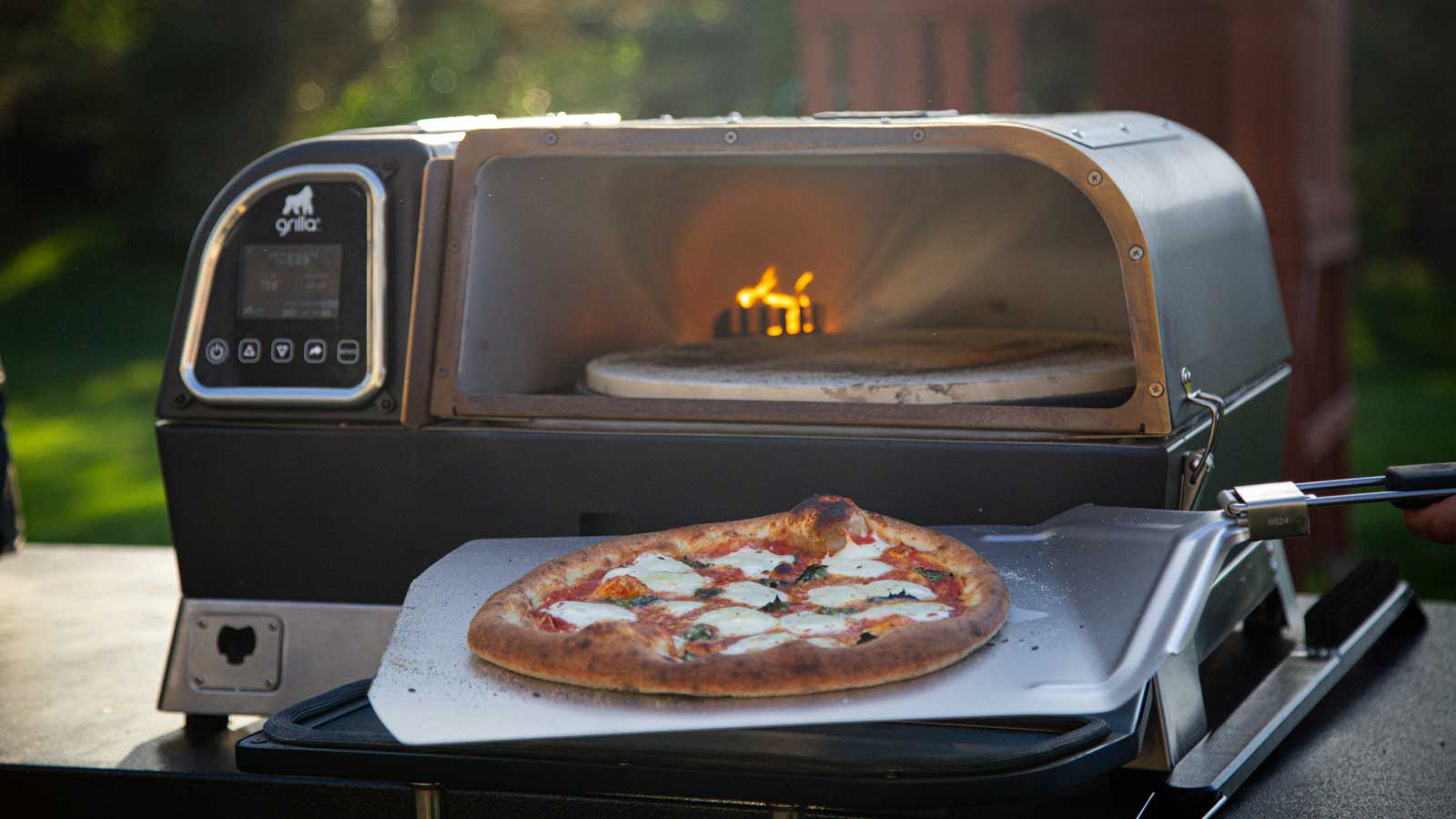
Leave a Comment